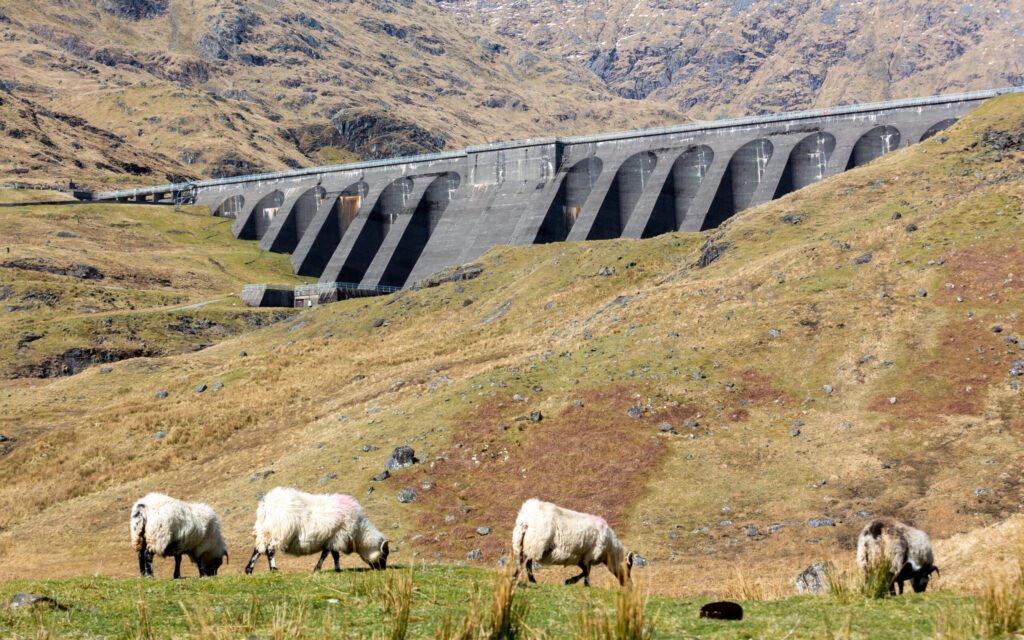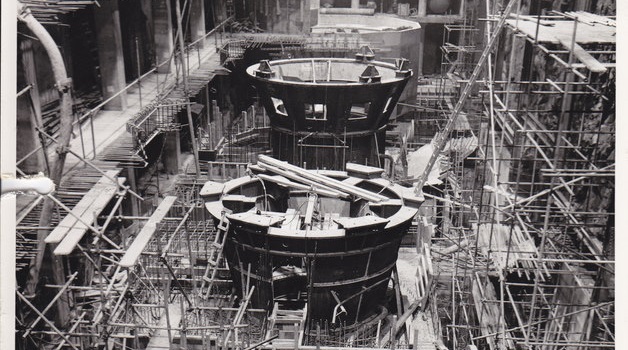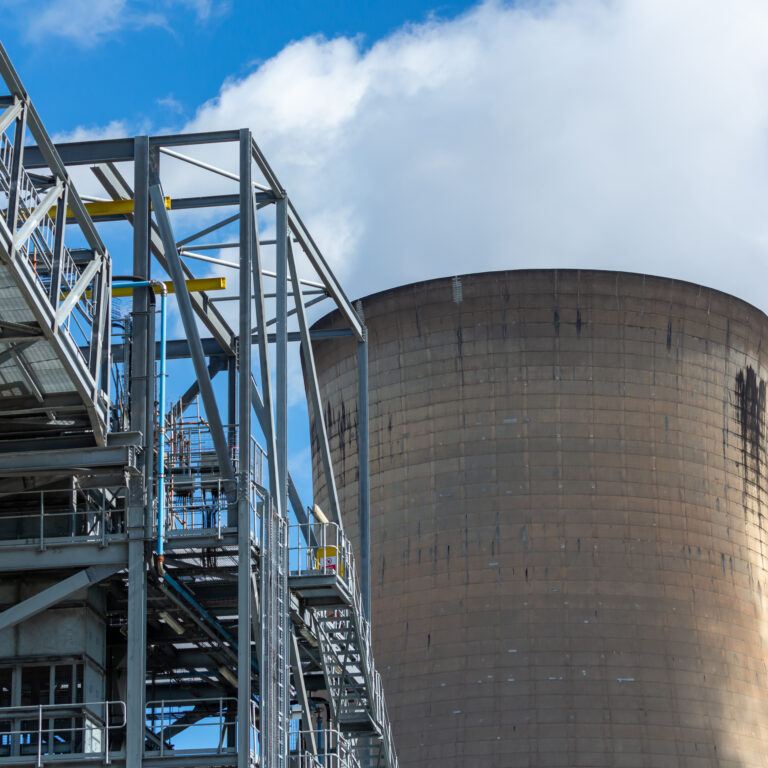By Steve Marshall, Drax’s Development Manager
In July 2023, Drax received development consent from the Scottish Government to build a new 600MW underground pumped storage hydro plant at its existing Cruachan facility in Argyll, which will more than double its electricity generating capacity.
Whilst a major milestone for the Cruachan expansion project, the right support is still needed from the UK Government to facilitate its development and we’re pleased to see some positive progress has recently been made.

During a visit to Cruachan Power Station following last year’s announcement of development consent, Scotland’s First Minister, Humza Yousaf, called on the UK Government to “provide an appropriate market mechanism” for projects including Cruachan’s expansion. Mr Yousaf also wrote to the Prime Minister urging him to take action so developers can have the certainty required to build a new generation of pumped storage hydro plants.
In order to incentivise investment for new-build pumped storage hydro plants, new financial mechanisms are needed to enable investors to back capital-intensive, long-length construction projects that will save consumers and the grid millions. The current lack of these frameworks is a key reason why no new pumped storage hydro plants have been built in the UK since 1984.
Growing the UK’s pumped storage hydro capacity is crucial to integrating more wind and solar power onto the energy grid, enhancing the nation’s energy security while tackling climate change. Pumped storage plants act like giant water batteries by using reversible turbines to pump water from a lower reservoir to an upper reservoir which stores excess power from sources such as wind farms when supply outstrips demand. These same turbines are then reversed to bring the stored water back through the plant to generate power when the country needs it.
At the start of this year, the UK Government announced that it has selected a cap and floor regime as its preferred investment framework for new large-scale, long-duration electricity storage projects, which is a huge step towards making a new generation of pumped storage hydro plants a reality.
What is a ‘cap and floor’ mechanism?
A cap and floor mechanism works by setting an upper and lower revenue limit an operator participating in the mechanism can earn from a particular asset. The lower revenue limit, or ‘floor’, is the guaranteed minimum amount of revenue that a generation asset can earn. If a generation asset does not generate enough revenue from its operations, this gets topped up to reach that floor level from the system operator using an allocated budget. At the other end of the limit, the ‘cap’ is the maximum amount of revenue the operator can earn from the asset. In cases where an asset’s revenue exceeds the cap, a proportion of the funds earned above the cap threshold are paid back to the system operator and used to reduce the cost of using the system for customers.

The cap and floor mechanism enables private investors in long-duration electricity storage projects, such as Drax’s planned expansion of Cruachan, to have a better degree of confidence by alleviating a significant amount of risk and uncertainty around whether they can recover their costs. Having a predictable revenue stream makes it more likely investors and lenders will support projects with high upfront capital costs. As well as de-risking investment and providing better value for money to customers, a cap and floor mechanism also rewards availability and efficiency, as operators are still exposed to opportunities between the cap and the floor. This includes participating in a number of different markets like the ancillary services markets, where Cruachan is able to earn revenue by providing critical inertia and stability to the grid, ensuring the safe and stable operation of the electricity system. Similarly, wholesale market arbitrage allows Cruachan to respond to price signals both in times of low/high generation and peak demand. These market opportunities incentivise operators to optimise their operations to generate revenue towards the highest end of the cap thresholds, driving innovation and efficiency in the sector. This efficiency is not only beneficial for the operators but also for the overall National Grid, bolstering the stability and reliability of the UK’s electricity supply. This enables projects to benefit from competitive market opportunities and provide services in response to price changes and benefit the consumer by providing critical services that the system needs at a competitive price.
What does this mean for Drax’s Cruachan expansion project and what are the next steps?
The UK Government’s consultation on designing a policy framework to enable investment in long-duration electricity storage ran from 9 January to 5 March 2024, and is now closed.
The consultation proposal of a cap and floor is very positive news for Drax’s planned Cruachan expansion, as it will provide the project with a route to market once the mechanism is in place. Without it, the significant upfront capital expenditure and revenue uncertainty would remain a barrier to investing in the project.
One of the most immediate benefits of pumped storage hydro is that it provides extremely quick back-up during periods of peak demand. For example, when deployed alongside intermittent renewables like wind or solar power, Cruachan can step in to store excess energy and provide it back to the grid when the wind doesn’t blow and the sun doesn’t shine. This reduces the waste and cost to customers associated with renewable curtailment.
With the Government’s ambition to deliver 50GW of offshore wind by 2030 as part of its Net Zero targets, it is in the interest of both Government and the grid to ensure enough storage is available by this point to manage the inherent intermittency of this technology. Pumped storage hydro projects have long construction times, over 5 years in the case of the planned Cruachan expansion. This means that delivery of the mechanism in the near-term is critical to ensuring that it’s available to support the electricity system in the early 2030s and beyond.
What are the benefits of pumped storage hydro for the UK?
A report by Scottish Renewables and BiGGAR Economics recently found that six projects currently under development in Scotland, including the Cruachan expansion project, will:
- More than double the UK’s pumped storage hydro capacity to 7.7GW.
- Create almost 15,000 jobs.
- Generate up to £5.8 billion for the UK economy by 2035.
During its construction phase, the Cruachan expansion is projected to provide up to £73m GVA and over 150 jobs in Argyll and Bute. Across Scotland this increases up to £260m GVA and over 500 jobs, which is a total possible UK benefit of over £470m GVA added to the economy and over 1,100 jobs supported amongst the wider supply chain and indirect local area support.

Pumped storage hydro can also provide a number of extra balancing and ancillary services outside of energy storage and generation, across multiple different markets. These markets play a critical role in ensuring the safe and stable operation of the electricity system by providing grid inertia, voltage control frequency response and restoration services, alongside quick flexible response to price signals both in times of low and peak demand. Being able to support wider services in this manner means pumped storage hydro offers better value for money to both investors and consumers, with an Imperial College study finding that it could help to reduce total system costs like these by between £44m and £316m per annum by 2050.
We look forward to working constructively with the UK Government and other stakeholders to help deliver a policy environment which secures investment, strengthens our energy security, and delivers for consumers. We’re ready to move mountains to tackle climate change.
Find out more about Cruachan’s plans for expansion here: drax.com/cruachan2



















